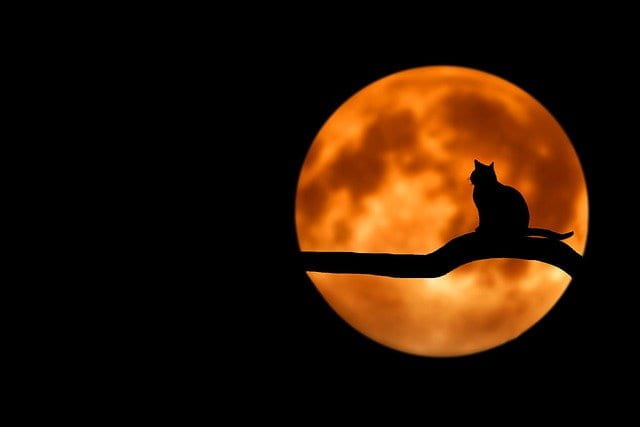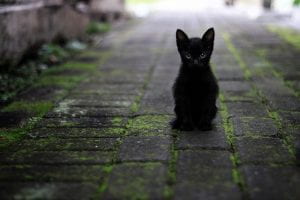
Medieval England hosted a slew of supernatural legends surrounding the common household cat. If you kept a pet in Britain in the 16th century, you might have been viewed with some degree of suspicion for your furry companion. Even today superstitious beliefs surrounding cats persist. Poet William Baldwin wrote of the troubling behavior of cats in his 1561 publication Beware the Cat, depicting episodes of the bizarre and otherworldly behavior of felines– activity you might term superncatural. Some speculate that the emergence of associations between pets and supernatural practitioners, commonly depicted as the aged ‘hag,’ was borne of the habit of elder, solitary types, particularly women, who kept themselves to a number of household pets, perhaps engaging in conversation with their domesticated creatures, which might then confuse a passerby into some misguided hypotheses. But cats weren’t the only four legged beasts to receive sideways glances from the superstitious folk; milkhares was a term used to refer to ‘hags,’ versed in witchcraft, who would transform themselves into hares in order to steal milk from neighbors’ cows. The threat of shapeshifting, malicious old women was enough to rouse paranoia among communities, the targets of which, aside from the women subjected to these fabricated associations, were the unassuming animals skittering along the British countryside.
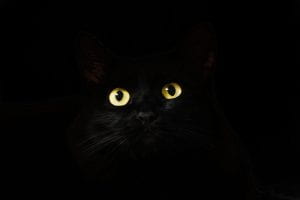
But not all cats who engaged in fantastical behavior were dairy-thieving witches or humans assuming alternative forms at all. Cats allegedly partook in all manner of misdeeds, congregating and conspiring under the ignorant gaze of humankind. If you should happen upon your cat engaging in any of the following activities, it just may be that he or she is a medieval British cat boasting supernatural faculties.
1) If your cat appears flustered at the name of Grimalkin, an Irish cat-monstrosity from centuries before who may or not be one of the aforementioned shapeshifting witches, then perhaps you have cause for concern. The fearsome cat was cut down only after consuming the child of its eventual killer. In Baldwin’s tale, an owner’s cat departed, never to be seen again, upon receiving news of Grimalkin’s death.
2) If you hear the conversing of cats in the alleyways and side streets adjoining your home, then this may be the innocent meowing of alleycats, or something much more complex. One recommendation is to obtain the ‘book of secrets’ penned by Albertus Magnus, wherein you will come upon a recipe for understanding the language of birds. By adjusting the recipe accordingly, you may access the language of cats and know with certainty of what these streetwise felines are chitchatting.
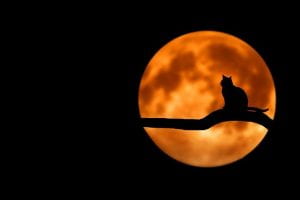
3) If you catch glimpse of a congregation of cats that appears too well organized for feline administration, then you may be witnessing a cat-trial. Cats, of course, have a common legal code by which they must all abide. If a cat dares to violate these parameters, an instance of which is discussed in Beware the Cat, then a cat-court must assemble to discuss matters of culpability and penitence.
According to English lore of the middle ages, cats are ever-watching agents of the shadows, observing and noting all goings-on in one’s own home. The agenda of a cat is unknown, but what is clear, according to Baldwin and others, is that they have breached much farther into our world, our desires and affairs, than we have tapped into theirs. So, do be on the lookout for chatty kittens and overly formal cat-gatherings, and be wary the next time you locate your cat spying upon you from the darkness, as it may have designs far beyond those you have afforded it, if it is indeed a cat at all.
By Ben Travers
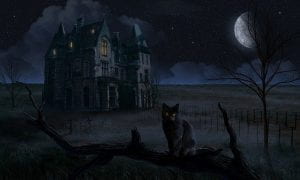
References:
Boyle, John Andrew. “The Hare in Myth and Reality: A Review Article.” Folklore, vol. 84, no. 4,
1973, pp. 313–326.
Cambrensis, Giraldus. The Historical Works of Giraldus Cambrensis, Containing the
Topography of Ireland, and the History of the Conquest of Ireland and the Itinerary Through
Wales, and the Description of Wales. Revised and Edited by Thomas Wright. Translated by Sir
Richard Colt Hoare and Thomas Forester, George Bell and Sons, 1887.
Dhuibhne, Éilís Ní. “‘The Old Woman as Hare’: Structure and Meaning in an Irish Legend.”
Folklore, vol. 104, no. 1-2, 1993, pp. 77–85.
The Concept of the Witch’s Familiar in Early Modern England, 15-30-1712,” from The
Animal/Human Boundary: Historical Perspectives, ed. Angela N H. Creager and William Chester
Jordan (Rochester: University of Rochester Press, 2002), pp. 157-190.
G. B. (or William Baldwin or Gulielmus Baldwin), Beware the Cat, 1584, London: long shop
adjoining Saint Mildreds Church in the Pultrie by Edward Allde.
